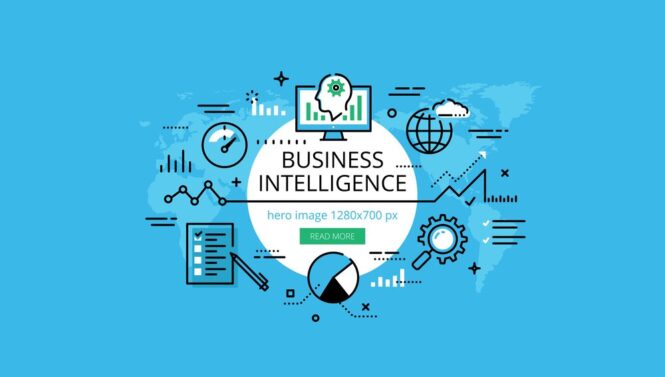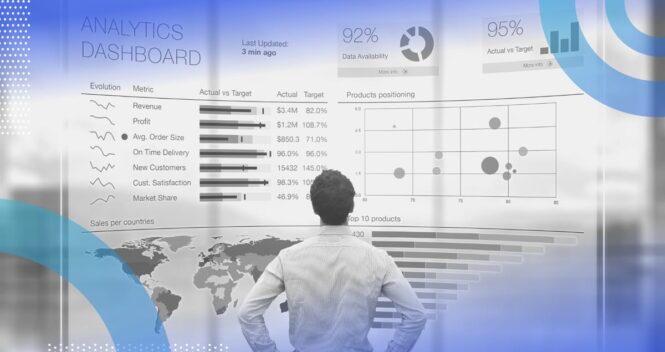Business intelligence (BI) is a technological and strategic framework used to analyze data and transform it into actionable insights. These insights help businesses make informed decisions and improve their operations. BI encompasses a range of processes and tools, including data mining, reporting, and data visualization, all aimed at understanding past and present business performance to drive future actions.
BI’s importance has surged in recent years as businesses strive to stay competitive in a data-driven world. Nearly half of all businesses use BI tools, and this number is expected to grow. For those unfamiliar with BI, it’s essential to grasp its core concepts and benefits. This article aims to explain what BI is, how it works, and its advantages, providing a comprehensive guide to this crucial business function.
CT Group is an example of a company leveraging BI to gain a competitive edge, showcasing the practical applications of these tools in real-world scenarios.
Core Concepts of Business Intelligence

Business intelligence integrates various technologies and methodologies to gather, store, analyze, and present business data. This integration helps organizations make data-driven decisions. The main components of BI include data mining, data visualization, and reporting, each playing a critical role in turning raw data into meaningful insights.
Data Mining: This involves using algorithms to find patterns and trends in large data sets. It helps in discovering relationships within data that are not immediately apparent.
Data Visualization: This converts complex data into visual formats like charts and graphs, making it easier to understand and interpret.
Reporting: This involves generating reports that summarize data and highlight key metrics. Reports are crucial for stakeholders to understand business performance and make informed decisions.
How BI Works
The BI process begins with data collection from various sources, including internal databases, external sources, and cloud applications. This raw data is then processed and stored in data warehouses. BI tools access this data to perform analysis and generate insights.
Data Collection: Data is gathered from multiple sources, ensuring a comprehensive view of business operations.
Data Storage: Collected data is stored in data warehouses, which are optimized for querying and analysis.
Data Analysis: BI tools analyze the data to identify patterns, trends, and anomalies. This analysis helps businesses understand what is happening and why.
Data Presentation: The analyzed data is presented through dashboards and reports, providing clear and actionable insights.
Benefits of Business Intelligence

Implementing BI offers numerous advantages to businesses, from improved decision-making to increased efficiency and competitiveness.
Enhanced Decision-Making: BI provides accurate and up-to-date information, enabling businesses to make informed decisions quickly.
Increased Efficiency: By automating data collection and analysis, BI reduces the time and effort required to gather insights.
Better Customer Understanding: BI tools help businesses understand customer behavior and preferences, leading to improved customer satisfaction.
Competitive Advantage: Companies that effectively use BI can identify market trends and adapt faster than their competitors.
Improved Performance Monitoring: BI allows businesses to track performance metrics and benchmark against goals, ensuring continuous improvement.
Real-World Examples of BI
Many industries use BI to transform their operations and improve performance. For example, financial services firm Charles Schwab uses BI to monitor branch performance across the United States, identifying areas for improvement and optimizing customer service.
Similarly, HelloFresh, a meal-kit service, automated its reporting processes with BI, saving significant time and enabling more targeted marketing campaigns.
Developing a BI Strategy
Creating a successful BI strategy involves several steps:
- Define Business Goals: Understand what you want to achieve with BI, such as improving sales or reducing costs.
- Identify Key Stakeholders: Involve all relevant parties, including IT, management, and end-users.
- Select the Right Tools: Choose BI tools that meet your business needs and are easy for your team to use.
- Prepare Data Infrastructure: Ensure your data is collected, stored, and managed effectively.
- Implement and Train: Roll out the BI tools and provide comprehensive training to all users.
Categories of BI Analysis

BI analysis can be divided into three main categories:
Predictive Analytics: Uses historical data to predict future outcomes, helping businesses plan for the future.
Descriptive Analytics: Analyzes past data to understand what happened and why.
Prescriptive Analytics: Recommends actions based on the analysis, guiding businesses on what to do next.
Advantages and Disadvantages of BI
While BI offers many benefits, it also has some challenges:
Advantages:
- Data Visibility: Provides a clear view of all business data.
- Accurate Reports: Ensures data-driven decision-making with precise reports.
- Streamlined Processes: Improves efficiency by automating data analysis.
Disadvantages:
- Initial Cost: The upfront investment in BI tools can be high.
- User Resistance: Employees may resist adopting new technologies.
- Data Skills Gap: Requires expertise in data management and analysis.
BI Platforms
There are various BI platforms available, each offering unique features to suit different business needs. When choosing a BI platform, consider factors like ease of use, visualization options, integration capabilities, and cost.
BI and Big Data

Big data refers to large and complex data sets that traditional data processing tools cannot handle. BI tools are designed to work with big data, helping businesses analyze vast amounts of information to uncover insights. This capability is crucial as businesses generate more data every year.
The Future Role of BI
The future of BI lies in its ability to evolve with technological advancements.
Artificial intelligence (AI) and machine learning (ML) are increasingly integrated into BI tools, providing more accurate predictions and deeper insights. As businesses continue to rely on data-driven strategies, the role of BI will become even more critical.
Conclusion
Business intelligence is a vital tool for modern businesses, providing the insights needed to make informed decisions and stay competitive. By understanding what BI is and how it works, businesses can leverage these tools to improve performance, understand customers better, and gain a competitive edge. With the continued growth of data, the importance of BI will only increase, making it an essential component of any business strategy.
 Imagup General Magazine 2024
Imagup General Magazine 2024



